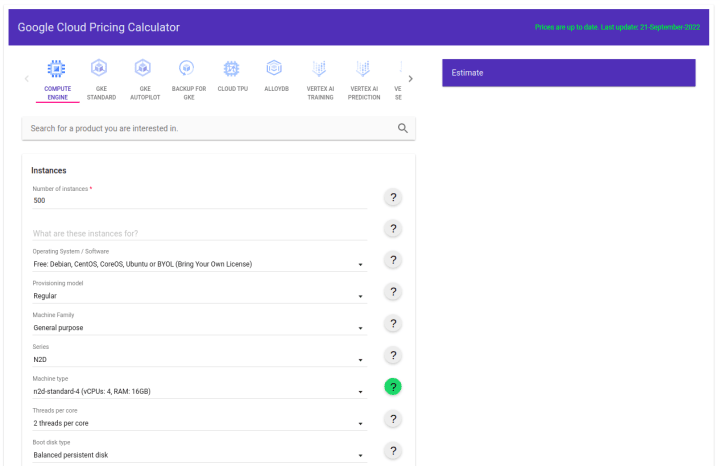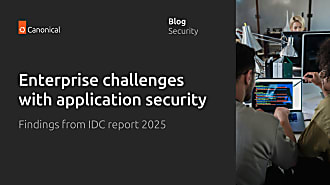Canonical
on 3 November 2022
How GCP pricing works
Have you ever wondered how GCP pricing actually works?
If you’re embarking on a new project and evaluating public clouds, the cost involved will be one of your main considerations. You might decide to use Google Cloud Platform (GCP) as your primary cloud platform. If so, you’ll want to estimate costs based on listed prices. But it might surprise you to find a higher bill than you originally expected.
If this sounds familiar, there is nothing to be ashamed of. Many people fall into this trap. And this is because GCP pricing is a little bit more complicated than people tend to think. The service itself is available in a variety of modes, and there are more ingredients you need to consider when estimating costs (aside from compute resources). The good news is, there are many tools available to assist you with those calculations.
What are those tools? How exactly does GCP pricing work? Let’s dive straight in!
Service modes
To help you optimise your cloud infrastructure costs, GCP is available in various service modes. While some of them are more suitable for micro workloads launched on-demand, others are more suitable for long-term production workloads.

Free Trial
Free Trial is an option that’s available to all new GCP users. It allows for $300 billing credit that is valid for 90 days and can be spent on various GCP resources at users’ convenience. The Free Trial might be a good option for organisations preparing for a cloud migration as well as students and individuals willing to learn GCP.
Free Tier
Contrary to the Free Trial, a Free Tier allows for free usage of GCP resources up to a specific limit. At the time of writing, this includes 25+ GCP services with 1 non-preemptible e2-micro VM instance per month. Like the Free Trial, the Free Tier might be sufficient for learning purposes but unsuitable for production environments.
On-Demand
On-Demand mode is usually the default and the most popular mode across all leading public cloud providers. Users can launch instances on-demand and get charged for the exact amount of resources consumed over time. This approach is based on the pay-as-you-go (PAYG) approach with no upfront payments and long-term commitments.
Spot VMs
Spot VMs benefit from unused GCP resources which would otherwise be wasted. Spot VMs are launched whenever any extra resources are available. They are hibernated, stopped or terminated when the cloud needs those resources back. Spot Instances allow for significant cost savings compared to On-Demand pricing but are not suitable for workloads that need to meet service-level agreements (SLAs).
Committed use discounts
Committed use discounts are a compelling option to save costs when you are running workloads in the long term. By committing to specific usage, measured in $/hour, for at least one year, organisations can benefit from competitive pricing compared to the On-Demand mode. Committed use discounts are suitable for production environments with pre-defined resource requirements but are currently limited to five GCP products only.
Sole-tenant nodes
Sole-tenant nodes also help organisations optimise costs when running workloads on GCP in the long term. With Sole-tenant nodes, organisations get physical machines allocated to them permanently; all resources are available exclusively for them. Sole-tenant nodes might be the best option in situations where access to bare metal is required for compliance or licencing.
GCP pricing ingredients
All the GCP service modes presented, except for Sole-tenant nodes, work based on PAYG billing. Organisations pay for the exact amount of resources consumed over time according to the official GCP pricing. There are multiple ingredients, however, that have an impact on the final quote. Those include:
- Compute resources – the number of vCPUs and the amount of RAM as defined in the Google Compute Engine (GKE) machine type,
- Storage resources – the amount of storage and IOPS as defined in the Persistent Disk type,
- Network traffic – the amount of intra-region, inter-region and region-Internet network traffic, measured in GB of data transfer per month,
- Other resources – any other resources, such as external IP addresses or Cloud Load Balancing, that create extra charges.
To complicate things even more, a bunch of those resources are available for free up to certain limits. However, extra charges apply when you exceed those limits. As a result, GCP pricing often leads to confusion. If your latest invoice from GCP surprised you, you might not be taking all those ingredients into account.
Furthermore, Canonical’s research confirms that compute resources account for only a portion of overall spending on public cloud infrastructure. According to our Cloud Pricing Report 2022, many organisations claim that the most significant portion of their budget is spent on storage resources (TB) and network resources.

GCP pricing calculator
At this point, it should be clear that there are multiple factors that determine the final pricing. However, estimating all those individual costs manually can be a nightmare. Especially when you’re dealing with large, multi-service workloads. Fortunately, GCP provides dedicated tools to help its customers with this process.
GCP’ pricing calculator provides total cost of ownership (TCO) estimates for cloud instances based on their number, configuration and additional requirements regarding storage and network. More detailed estimates are available for various regions, guest operating systems and pricing models. The calculator estimates total monthly and yearly costs.

Another option is pricing assistance. This option involves reaching out to GCP’ sales team for a personalised quote based on detailed workload resource requirements. This might be the most convenient option for big enterprises as underestimating costs can have a negative impact on the entire cloud migration process.
Canonical’s Cloud Pricing Report 2022
Now that you have got a better understanding of how GCP pricing works, you might be wondering how it compares to other leading cloud providers.
Canonical’s cloud pricing report 2022 provides an overview of cloud list prices from leading public and private cloud providers as of July 2022. By considering three sample cost scenarios and using official TCO calculators, we estimate the costs of running the same workload across leading cloud platforms. The report includes results from our Cloud Pricing Survey 2022 and commentary from industry experts. The survey’s outcomes show the growing importance of hybrid multi-cloud architecture and confirm its advantages from a TCO stance.

Learn more
Canonical partners with GCP to provide Ubuntu Pro for GCP customers. Ubuntu Pro is a premium Ubuntu image, delivering the most comprehensive open-source security and compliance for production mission-critical workloads.
Canonical helps Ubuntu users optimise infrastructure costs in hybrid multi-cloud environments, allowing enterprises to benefit from the best of the public and private cloud space simultaneously.
Read a whitepaper – “A business guide to hybrid multi-cloud” >



